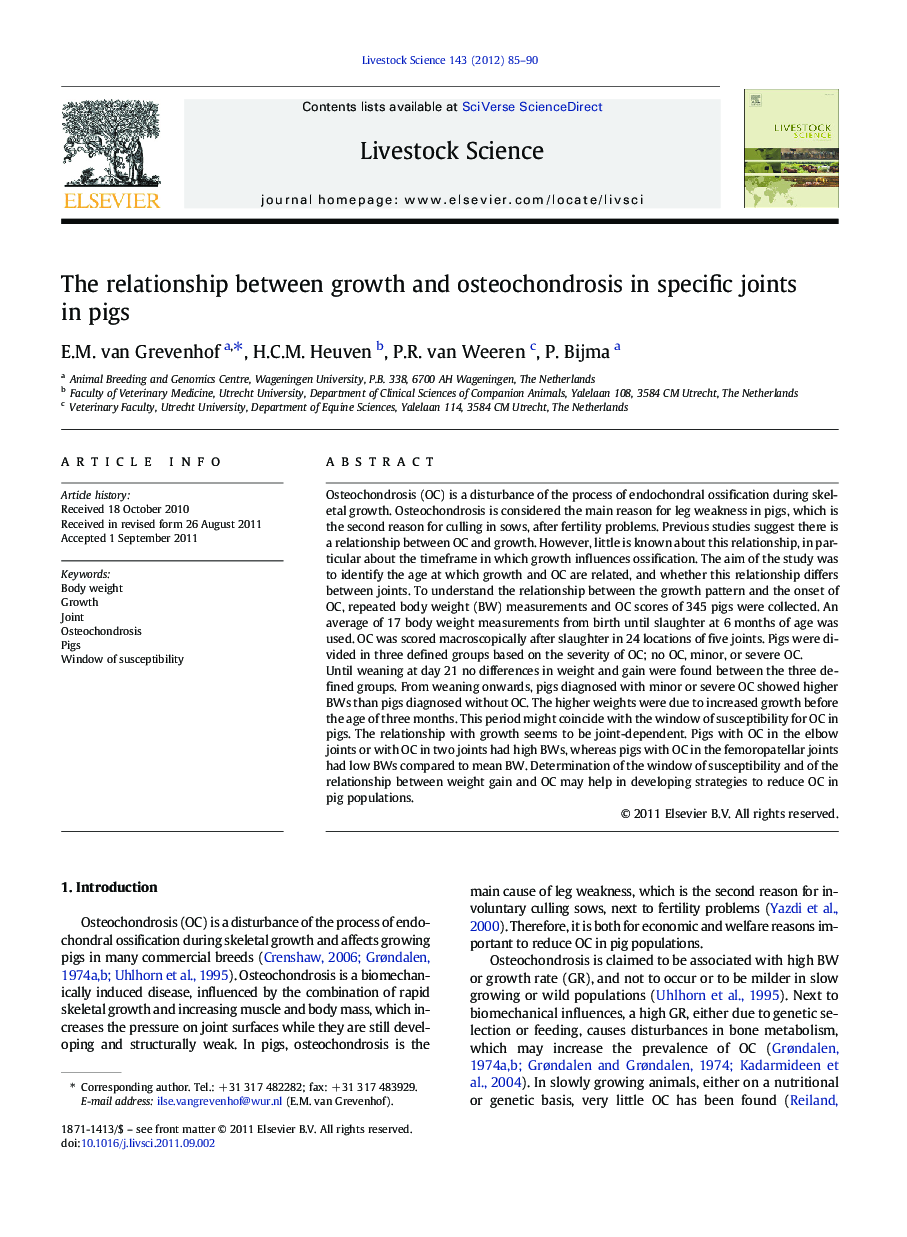| Article ID | Journal | Published Year | Pages | File Type |
|---|---|---|---|---|
| 2447442 | Livestock Science | 2012 | 6 Pages |
Osteochondrosis (OC) is a disturbance of the process of endochondral ossification during skeletal growth. Osteochondrosis is considered the main reason for leg weakness in pigs, which is the second reason for culling in sows, after fertility problems. Previous studies suggest there is a relationship between OC and growth. However, little is known about this relationship, in particular about the timeframe in which growth influences ossification. The aim of the study was to identify the age at which growth and OC are related, and whether this relationship differs between joints. To understand the relationship between the growth pattern and the onset of OC, repeated body weight (BW) measurements and OC scores of 345 pigs were collected. An average of 17 body weight measurements from birth until slaughter at 6 months of age was used. OC was scored macroscopically after slaughter in 24 locations of five joints. Pigs were divided in three defined groups based on the severity of OC; no OC, minor, or severe OC.Until weaning at day 21 no differences in weight and gain were found between the three defined groups. From weaning onwards, pigs diagnosed with minor or severe OC showed higher BWs than pigs diagnosed without OC. The higher weights were due to increased growth before the age of three months. This period might coincide with the window of susceptibility for OC in pigs. The relationship with growth seems to be joint-dependent. Pigs with OC in the elbow joints or with OC in two joints had high BWs, whereas pigs with OC in the femoropatellar joints had low BWs compared to mean BW. Determination of the window of susceptibility and of the relationship between weight gain and OC may help in developing strategies to reduce OC in pig populations.
